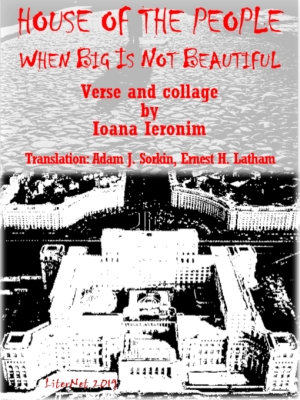A Symbol of Dictatorship Become a Symbol of Democracy
Ioana Ieronim
I avoided even coming near the House of the People for years, particularly after I had first entered it for a conference in the 1990s, and I was completely dejected. For almost a decade, we had gone through the major destruction suffered by the city of Bucharest for this building, and the enormous waste it involved, with grave consequences for the entire country. Soon "after" I found that one could see not only the absurd disproportion of its spaces, but already the wear and tear, the broken steps etc., its underlying unsubstantiated pretense. But some three years ago the time came for me to accompany a foreign friend who wanted to take a guided tour of the building. The presentation consisted mainly of a string of superlative figures and data, which had made this construction famous worldwide, but induces a sort of stupor of the mind and clogging of imagination. "This is a frenzy of figures", I thought. And I felt I had a duty to collect in this volume the voices of the generation(s) who either experienced or witnessed the painful evolution of this neighborhood. The introductory pages are meant to somehow echo the way this place is usually introduced to visitors, providing a list of these superlative sizes and quantities drawn from various sources.The Vremea publishers promptly issued a bilingual volume of this material, in their outstanding collection "Planet Bucharest" (2016). My thanks go now to the online publisher Liternet, to the editor Ana Damian and the director Răzvan Penescu, for the present edition, which is also accompanied by suggestive illustrations made by Dinu Lazăr, Andrei Pandele and Andrei Bârsan.
Whether we like it or not, the House of the People, the Palace of Parliament... the heaviest building in the world, the second biggest after the Pyramid of Cheops, a construction visible from the moon... remains unavoidably a tourist attraction eliciting various reactions. This past winter, for instance, the graphic artist Dan Perjovschi focused on the theme of the wall (highly topical!) for an exhibition in Paris and wrote the following: "Here and now, in Europe, Romania's Place of Parliament is surrounded by a wall which forbids any possibility of a public park. The former symbol Dictatorship, now the would-be symbol of Democracy, still keeps citizens at a distance. As if the leaders are still afraid. Are they?"
(Ioana Ieronim, April 2019)
